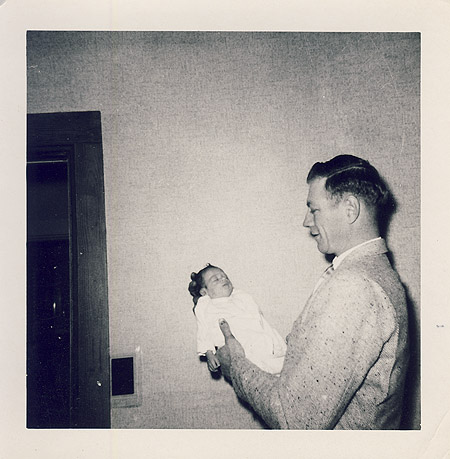
For the past five years, I’ve eaten pretty much the same thing every single day.
Every morning for the last 1,825 some odd days, I’ve eaten an egg scramble (1 whole egg + 8 ounces of egg whites) + 1 oz of cheddar cheese + 2 Xtreme Wellness High Fiber Low Carb Tortilla Wraps.
I’ve had almost 2,000 midmorning “meals” consisting of a whey protein shake (two scoops of whey protein + two tablespoons of olive oil), along with a cup of oatmeal topped with some fruit (usually blueberries, blackberries, or cherries).
My lunch has invariably consisted of one of three iterations of premade Ice Age meals: chicken and sweet potatoes, chicken and rice, or barbacoa and rice. In recent days, I’ve started to add some greens to the meal, like some spinach or broccoli. You know, to mix it up.
For my post-workout afternoon meal, I’ve chugged another 1,800+ whey protein shakes, accompanied, again, by a cup of oatmeal and some fruit.
Dinners are my wild card for the day. I have whatever the family is having (in a portion that fits my macros).
On special occasions and holidays, I’ll sometimes deviate from this routine.
But other than those occasional indulgences, my diet pretty much never varies. I eat the same things for breakfast, lunch, and “snacks” day in and day out, nearly 365 days a year.
Over the last five years, I’ve been able to easily maintain a healthy weight, without feeling hungry or hangry, and I attribute this to two factors: The first has been a commitment to tracking my macros (you can find our complete guide to following this way of eating here). The second is my “Groundhog Day” diet.
Let’s talk today about why it works and how to tailor and implement it in your own life.
Man Was Meant to Live on a Handful of Foods Alone
Much has been said in the past decade about returning to a diet similar to that of our primitive ancestors. But while the types of foods paleo man consumed has gotten a lot of attention, it may be even more important to consider the variety of foods he ate. Mainly, the distinct lack thereof.
While we don’t know precisely what and how our hunter-gatherer ancestors ate, studying the lives of current nonindustrial cultures can give us some insights about their eating habits.
Take a look, for example, at modern hunter-gatherer tribes like the !Kung San of the Kalahari Desert and the Yanomami of the Amazon rainforest and something distinctly jumps out: their diets are pretty damn boring.
The !Kung San get about 40% of their calories from meat that they hunt. The other 60% comes from various edible plants. But here’s where things get interesting: While the !Kung San recognize over 100 plants as edible, most of their intake of plant food comes from just 14% of those 100+ possibilities. In fact, the lion’s share of the calories they get from plant food derives from just a single source: the nuts from the mongongo tree. Mongongo tree nuts provide half of the yearly total caloric intake of the !Kung San. If you lived among these people, you’d eat some meat and a bunch of mongongo nuts every day of your life. Basically two foods, day in and day out. That’s it.
Occasionally, the !Kung San get access to some tasty high calorie treats like honey and Kalahari truffles. When they do come across these foods, they gorge themselves. But except for these rare indulgences, members of the !Kung San eat mostly meat and mongongo nuts.
The Yanomami have a similarly unvaried and boring diet. Most of the Yanomami’s calories come from cultivated starches like plantains, sweet potatoes, cassava, and corn. Of those cultivated starches, plantains provide the majority of the calories they consume in a year.
So the Yanomami pretty much eat plantains with the occasional bit of meat. That’s essentially it. Every day. Until they die.
It probably goes without saying, but amongst both peoples, obesity is rare and adults are able to maintain a lean, healthy body composition throughout their lives.
A Paleo Man Walks Into a Golden Corral
In modern, industrialized societies, folks have more options for their diet than the !Kung San and Yanomami do. Way more options. Menus of options. Aisles and aisles of options. Cabinet- and freezer-fulls of options.
And all those options are making us fat.
Research has repeatedly shown that when humans (and rats as well) are presented with a wide variety of foods, they tend to eat more total food. Diet researchers call this phenomenon the “Buffet Effect.”
In an encounter with any novel stimulus, including food, the brain releases pleasure and excitement-creating dopamine, which make you want to dig lustily into a new food. But as a novel food becomes familiar, feelings of satiety increase and the desire to eat the food decreases. This dynamic is called “sensory-specific satiety.” It explains why the first few bites of a big cheeseburger are divine, while the last few taste more meh.
At a buffet, like Golden Corral (yeehaw!), there are so many different foods, with different flavors and textures, that sensory-specific satiety never has a chance to fully kick in. You eat some pizza and when you’re tired of that, you move on to the BBQ, and when that loses its luster you dig into the turkey and stuffing; it takes awhile to feel full, and even when you do, after sampling all that savoriness, you still feel like you somehow have room for something sweet — time to hit the dessert table! Thanks to the Buffet Effect, you end up eating a lot more total food than if there was one and only one dish available.
Hunter-gatherers encountered novel foods as well-spaced out singularities — one food encountered every few months. The number of food choices available today overwhelms this ancient pattern and amplifies our hunger — and that’s true not only of the options available at a restaurant, but those in the typical home kitchen as well.
The Day-to-Day Buffet Effect
While the Buffet Effect can exert its influence on how much you eat in a single setting, it also impacts how much you eat across a week’s time.
Researchers discovered this back in the 1960s in an experiment where they brought two morbidly obese volunteers into a hospital. The only food these two volunteers got was a bland liquid that supplied adequate levels of all essential nutrients.
As an interesting twist in the setup, this proto-Soylent was dispensed from a machine. The volunteers simply had to put a straw in their mouth, push a button on the machine, and start drinking the slurry — sort of like gerbils getting water from a bottle.
The volunteers were allowed to consume as much of the liquid food as they wanted. If they were hungry, they just had to shuffle over to the machine, put the straw in their mouth, push the button, and start drinking. There were absolutely no restrictions.
Without any coaxing or intervention from the researchers, the volunteers started drinking less and less of the stuff as the days went on. By day eighteen, the male volunteer was consuming just 275 calories a day of the liquid food. The female volunteer was only consuming 144 calories a day. Both volunteers lost weight (natch). Despite consuming so few calories, none of the volunteers complained about being hungry. The starvation response never kicked in.
Five years later, physiology researcher Michel Cabanac conducted a follow-up study in which a group of volunteers was placed on an unrestricted liquid diet for three weeks. All members of this group spontaneously started consuming fewer calories and lost weight. None of the volunteers complained about being hungry despite eating fewer calories. This result confirmed the findings in the machine-feeding test.
Cabanac then took another group of volunteers and deliberately restricted their regular diets. These people ate the variety of foods they usually ate — cereal, cheeseburgers, meatloaf, etc.– just in smaller quantities. Unlike the group that consumed the same liquid slurry day after day, the volunteers in this group all experienced intense cravings. As Cabanac reported, they “had to continually fight off their hunger and would spend the night dreaming of food.”
Why Eating the Same Thing Every Day Can Help You Lose Weight and Keep It Off
If you eat a burger for lunch on Monday, a chicken sandwich on Tuesday, pizza on Wednesday, and so on, each meal retains a significant amount of novelty, triggering what we might call the “Long-Term Buffet Effect,” which makes you want to eat more at each meal and keeps you experiencing higher levels of hunger. But if you eat the very same burger every single day for a week, two weeks, months at a time, its novelty wears off, and your brain sends you greater satiety signals to stop eating. When you consume the same thing every day, it loses its excitement, and becomes significantly less tempting to overeat.
Limiting your menu of food options helps curb overeating in more practical ways as well.
When you’re deciding afresh every.single.day, at every.single.meal, what you’re going to eat (which typically comes down to what you feel like eating), oftentimes you’re going to default to less healthy choices. Eating the same thing every day helps you stay on track by putting this decision on autopilot. I’m never thinking, “What should I eat for lunch today?” I pull my meal out of the freezer, pop it in the microwave, and consume it with zero dithering or deviations.
Eating the same thing every day also makes it much easier to track your macros. Instead of looking up new foods in MyFitnessPal all the time, I just tell the app to re-log what I ate yesterday as what I ate today. And since I’ve gotten to know the macro breakdown of my meals like the back of my hand, figuring out which macros I have remaining, and thus how much I should eat at dinner, is a cinch.
As a final benefit, putting your eating choices on autopilot just makes life easier in general; you’re required to make fewer decisions throughout the day; creating grocery lists is simpler, cooking is simpler (I can practically make my breakfast with my eyes closed); and you can put the bandwidth and willpower you subsequently save towards maintaining other health-promoting habits.
What Should You Eat When Eating the Same Thing Every Day?
While paleo man ate the same things for all his meals, all of his days, citizens of the modern world, who are cognizant of having so many choices, and understandably wish to sample them, will likely find that regimen unsustainable.
What is very sustainable is keeping your breakfasts and lunches entirely uniform, and then allowing yourself variety in your dinners, and this is the eating plan I would recommend.
As to what to eat for these day-in-day-out breakfasts and lunches, first consider a couple factors.
The fact that we likely evolved to be healthy while consuming only a handful of things calls into question the modern edict that an ideal diet must consist of a wide variety of foods. And while I personally don’t recommend something like the carnivore diet, the fact that people can seemingly subsist entirely on meat also makes one think that eating a very limited number of foods may not be as unhealthy as often thought. That being said, if you’re eating something 365 times a year, you probably want to eat things that will give you good nutritional bang for the buck.
You also want to settle on a consistent menu of fairly bland, less palatable foods because they’re even less tempting to overeat. While any food you eat day after day will lose its novelty/excitement and become less tempting to overeat, this effect is far stronger with healthier, less tasty food than less healthy, more tasty (read: sugar/fat/carb laden) food; that is, it’s easier to control your portions with a daily lunch of chicken and sweet potatoes than a daily lunch of pepperoni pizza. The participants on the liquid diet mentioned above not only ate less and less over time because they got habituated to their nutrition shake, but because it wasn’t even very enjoyable to drink in the first place.
The trick here is to aim for “palatable enough.” You want to create a limited menu of foods that aren’t so tasty that you’re tempted to overeat them, but aren’t so repulsive that you won’t stick with the routine in the long-term. There are two routes you might go here.
The first is to eat the same meal replacement shake or bar for every breakfast and lunch and then a sensible dinner. Basically, the SlimFast plan, which has been updated/replicated in the modern age by companies like Soylent. On the upside, this approach gives you plenty of convenience (in the form of ready-made/prepackaged “food”) and the least number of choices (which preserves your mental bandwidth). It’s stupid simple. The downside is that meal replacements are “franken-food,” stripped of inherent nutrition (what nutrition they have is added back in vitamins and such). You’ll thus want to make sure your dinners are as macro and micronutrient dense as possible.
If you’re not into meal replacements, aim to consume a limited menu of foods, combined into a limited repertoire of meals, that nonetheless provide all your essential nutrients. For me, my staples are eggs, fiber wraps, oatmeal, sweet potatoes, rice, spinach, broccoli, blueberries, cherries, yogurt, chicken, beef, whey protein, and olive oil. It’s only about a dozen foods, but they’re healthy foods which create a balanced diet. Plus I get whatever foods pop up in my dinner.
Even here, you might consider making one of your whole food meals premade/packaged, as in the Ice Age meals I eat (I don’t have any connection to this company, by the way). They’re pricey, but I buy them in bulk, save money through the simplicity of my other foods, and consider the convenience cost worth it; deciding whether or not to cook chicken breasts and sweet potatoes for a week’s worth of lunches is one less choice I have to make, one more decision I can put on autopilot, one more way I make defaulting to a healthy lifestyle even easier.
With my menu, I don’t crave whey protein shakes, but I don’t mind drinking them either; eating one entree of chicken and sweet potatoes feels fine, but I’m never tempted to eat another. The last bite of each meal is just as mildly appetizing and neutrally acceptable as the first. I feel like the !Kung San, who anthropologists have described as eating their daily meat and nuts “without much enthusiasm.”
As neuroscientist and obesity researcher Stephan Guyenet told me in my podcast interview with him, people need to get over the idea “that their food has to be delicious every time.” That you need to eat, are in some way entitled and deserve to eat, delicious, interesting food not just every day, but three times a day, every day, is actually a pretty strange idea when you think about it.
For two of your three daily meals, it’s okay to simply let your food be fuel. To let it be Groundhog Day for your breakfast and lunch, indefinitely. Your health and waistline will greatly benefit; this is one slate of reruns for which you’ll be thankful.
Listen to my interview with Stephan for even more tips on eating and dieting:







